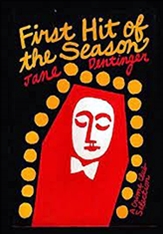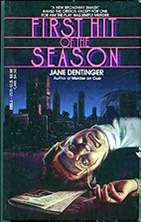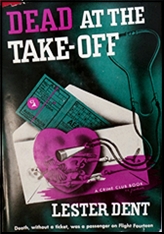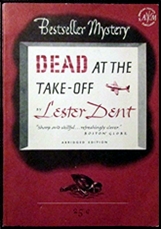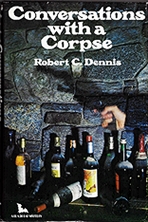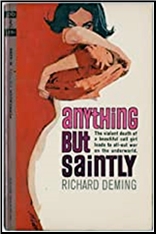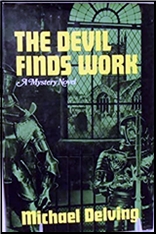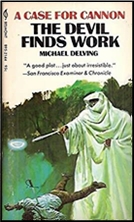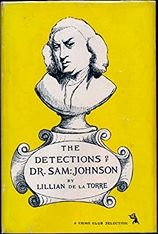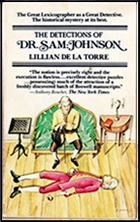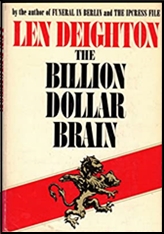Wed 28 Jun 2023
A 1001 Midnights Review: AUGUST DERLETH – In Re: Sherlock Holmes: The Adventures of Solar Pons.
Posted by Steve under 1001 Midnights , Reviews[4] Comments
by Robert E. Briney
AUGUST DERLETH – In Re: Sherlock Holmes: The Adventures of Solar Pons. Mycroft & Moran, hardcover, 1945. Reprinted as Regarding Sherlock Holmes #1 – The Adventures of Solar Pons (Pinnacle, paperback, 1974).
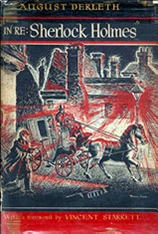
August Derleth was a literary phenomenon. In a writing career that lasted from his teens until his death at the age of sixty-two, he worked in a wide variety of genres and styles. Among his more than 150 books are contemporary novels, historical novels (both for adults and for young readers), regional history, biographies, mystery fiction, true-crime essays, pastiches, weird and supernatural fiction, children’s books, personal journals, compilations of nature observations, and poetry.
He edited numerous volumes of short stories and poetry, and he founded and operated Arkham House, a publishing company originally devoted to preserving the work of H. P. Lovecraft in book form; Arkham later published the first books of such writers as Ray Bradbury, Robert Bloch, Fritz Leiber, and A. E. Van Vogt.
By his late teens, Derleth had read and reread all of the Sherlock Holmes stories, and wrote to Sir Arthur Conan Doyle to ask if there would ever be any more of them. Doyle’s noncommittal reply spurred the nineteen-year-old Derleth to fill the gap himself. The result was “The Adventure of the Black Narcissus,” the first of some seventy stories about Solar Pons of 78 Praed Street and his literary chronicler, Dr. Lyndon Parker.
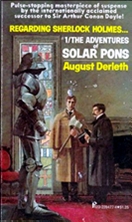
In Re: Sherlock Holmes gathers twelve of these stories in book form. In addition to “The Black Narcissus,” the book includes “The Adventures of the Norcross Riddle,” ·”The Retired Novelist” “The Three Red Dwarfs,” “The Purloined Periapt,” “The Man with the Broken Face,” and others. As Vincent Starrett wrote in his introduction to the book, Pons “is not a caricature of Sherlock Holmes. He is, rather a clever impersonator, with a twinkle in his eye, [who] hopes we will like him anyway for what he symbolizes.” Ellery Queen’s jacket blurb asked, “How many budding authors, not yet old enough to vote, could have captured the spirit and atmosphere of the Sacred Writings with so much fidelity?”
The Pons stories eventually filled seven volumes (including one novel), with an additional volume of miscellaneous commentary. The entire series was edited and revised by Basil Copper and issued as a 1306-page, two-volume set, The Solar Pons Omnibus, in 1982. Some diehard fans of the Pontine canon have expressed a preference for the original versions over the altered texts in the omnibus, but for the average reader the differences are hardly significant.
———
Reprinted with permission from 1001 Midnights, edited by Bill Pronzini & Marcia Muller and published by The Battered Silicon Dispatch Box, 2007. Copyright © 1986, 2007 by the Pronzini-Muller Family Trust.
